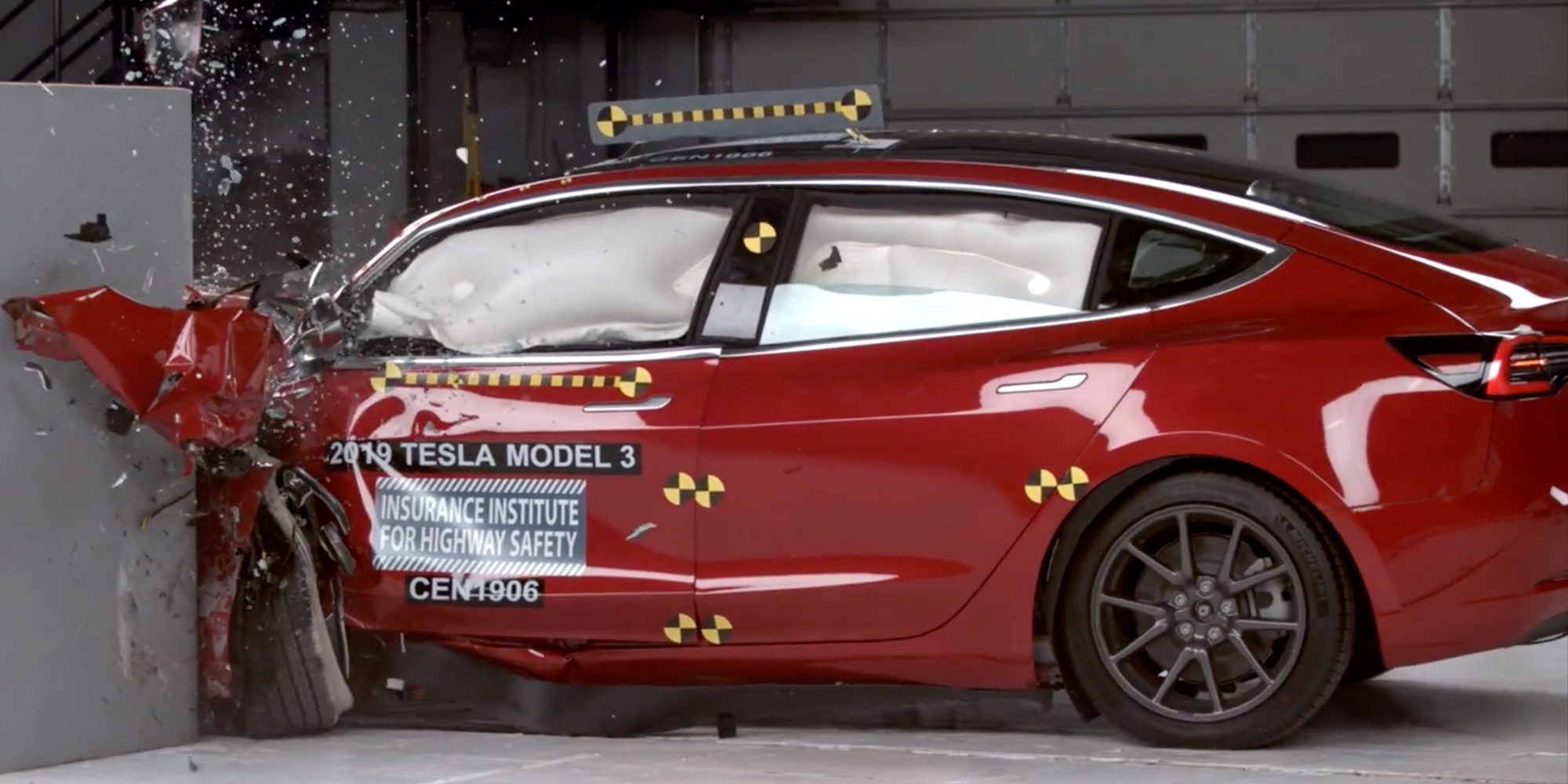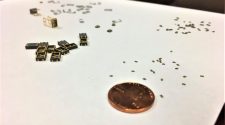The Insurance Institute for Highway Safety has announced that the Tesla Model 3 has won its highest safety award, Top Safety Pick+, after achieving “good” ratings across the board in all of their test categories. The Model 3 is the second battery electric vehicle to win the award, after the Audi e-tron won it last month.
The Model 3 has won several other safety plaudits, including 5-star ratings in all categories and the lowest probability of injury ever tested from NHTSA, 5 stars from from Euro NCAP while being hailed as setting a “new safety technology benchmark,” and 5-stars from the Australiasian NCAP.
IIHS’ “Top Safety Pick” award requires vehicles to earn “good” ratings in the driver-side small overlap front, moderate overlap front, side, roof strength and head restraint tests, and a good or acceptable rating in the passenger-side small overlap test. Vehicles also must have a front crash prevention system with an advanced or superior rating and good- or acceptable-rated headlights.
The highest-tier award, “Top Safety Pick+,” further requires “good” ratings in the passenger-side small overlap test and the headlight evaluation.
The Model 3 managed to achieve “good” ratings in headlights and all categories for crash safety, along with a “superior” rating for front crash prevention. The only injury risk recorded in IIHS tests was a moderate risk of leg injury in driver-side small overlap front crash tests.
In the same release, IIHS stated that the Chevy Bolt narrowly missed out on a Top Safety Pick award due to “poor” headlight performance and an “acceptable” passenger-side small overlap rating.
The Model S previously missed a Top Safety Pick award for the same reason – “poor” headlight performance.
Here’s a video from IIHS announcing the awards, with photos and video from the testing procedures. Tesla fans, if you’re squeamish, you may not want to watch this one:
IIHS Chief Research Officer David Zuby was quoted in the release, stating that “vehicles with alternative powertrains have come into their own. There’s no need to trade away safety for a lower carbon footprint when choosing a vehicle.” The Hyundai Nexo, a fuel cell vehicle, has also earned a Top Safety Pick+ award.
Tesla responded to this news with a blog post touting the award, stating:
We engineer our cars to be the best in the world – in every category. Model 3, our most affordable car yet, is no exception. From the start, we designed it to be among the safest cars ever built, with the goal of getting as many Model 3s on the road as possible to further our mission.
The safety of our customers is what matters most, which is why our active safety features and passive safety equipment come standard on all of our cars. We’re also committed to making our cars even safer over time via over-the-air updates, helping us ensure that all Tesla drivers have access to the best safety features available for their cars.
Tesla was particularly proud of the strength of the Model 3’s all-glass roof, which resisted 20,000 pounds of force during testing – more than the weight of five Model 3s stacked on top of each other.
Previously, IIHS had said that Model 3’s front crash prevention was “superior,” but had criticized the earliest cars for their headlights, rating them only “acceptable.” Tesla improved the headlights, and IIHS increased their rating.
Click through to IIHS website for a full breakdown of how the Model 3 fared in every test category. Several videos have been posted showing individual side, moderate overlap, and driver-side small overlap crash tests.
Electrek’s Take
We’ve heard a lot of nonsense lately from people trying to suggest that electric cars aren’t as safe as ICE cars – as if having a giant tank of flammable fluid which is constantly being combusted at a rate of thousands of times per minute is somehow supposed to make a car safer.
One reason among many that EVs can be made safer than gas cars is because EVs can have larger front crumple zones. Since there’s no engine under the hood, crash energy can be dissipated over a longer area, which slows the car down more gradually and thus reduces the amount of crash energy transferred to the driver. In this way, when a car crumples in a crash, it helps to make the occupants safer. Crumple zones have been used in cars since the 1950s.
But despite these advantages, just hours ago we heard the argument that reducing fuel efficiency is supposed to make cars safer. This is a ridiculous assertion, as we covered earlier on Electrek.
So it’s nice to have yet another confirmation, and a timely one at that, that the current best-selling EV is indeed not only “safe enough,” but safer than almost all other vehicles on the road.
Subscribe to Electrek on YouTube for exclusive videos and subscribe to the podcast.















